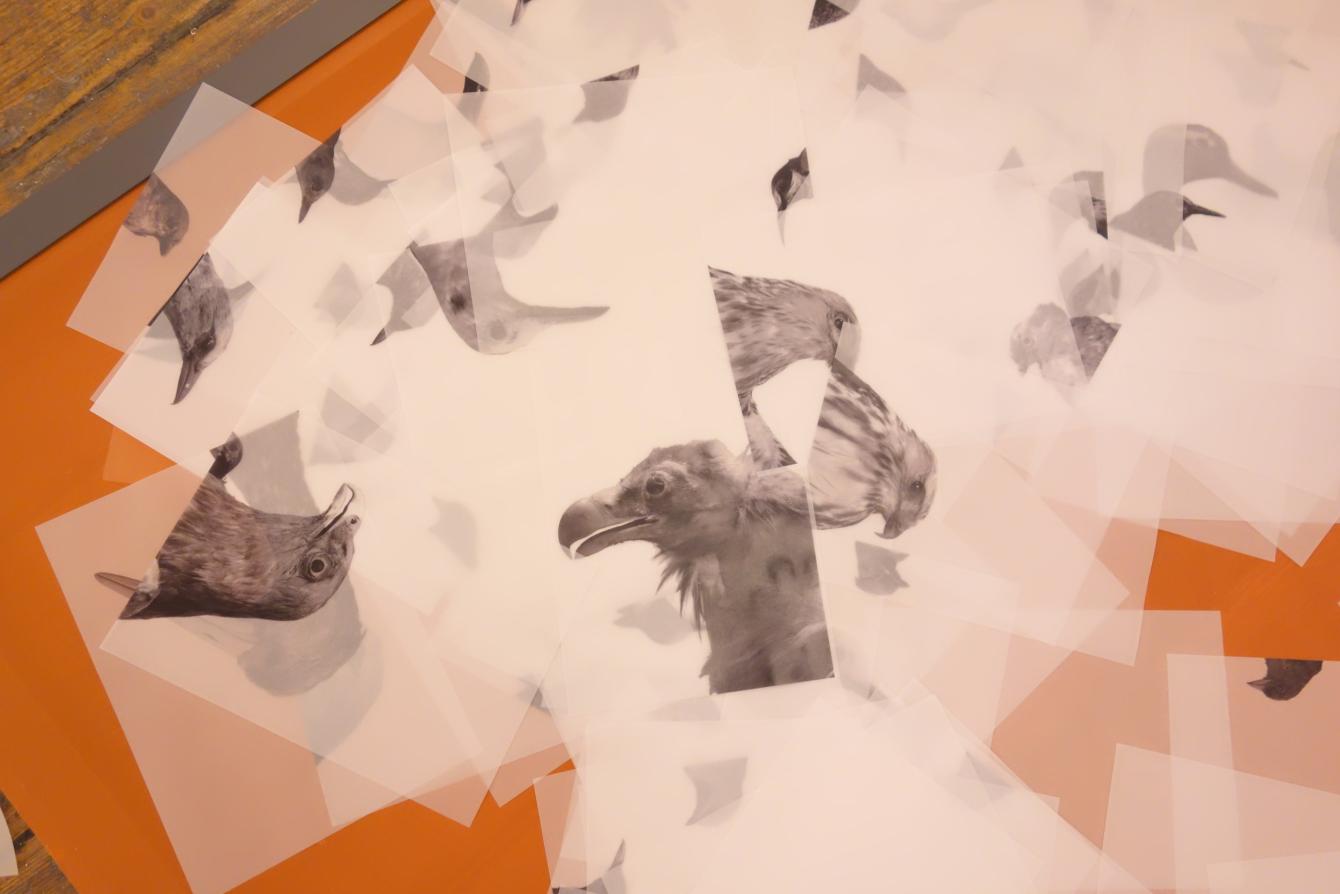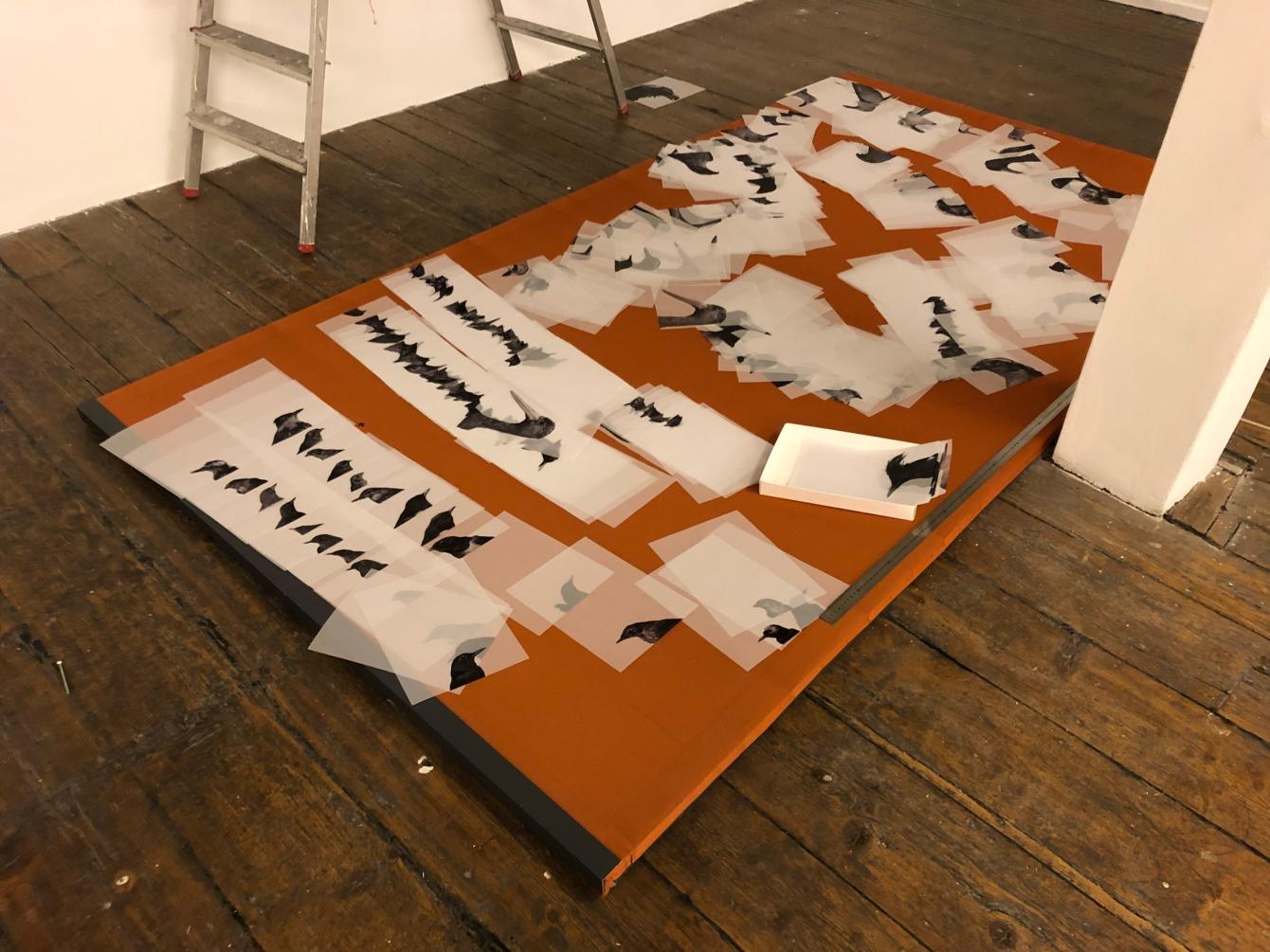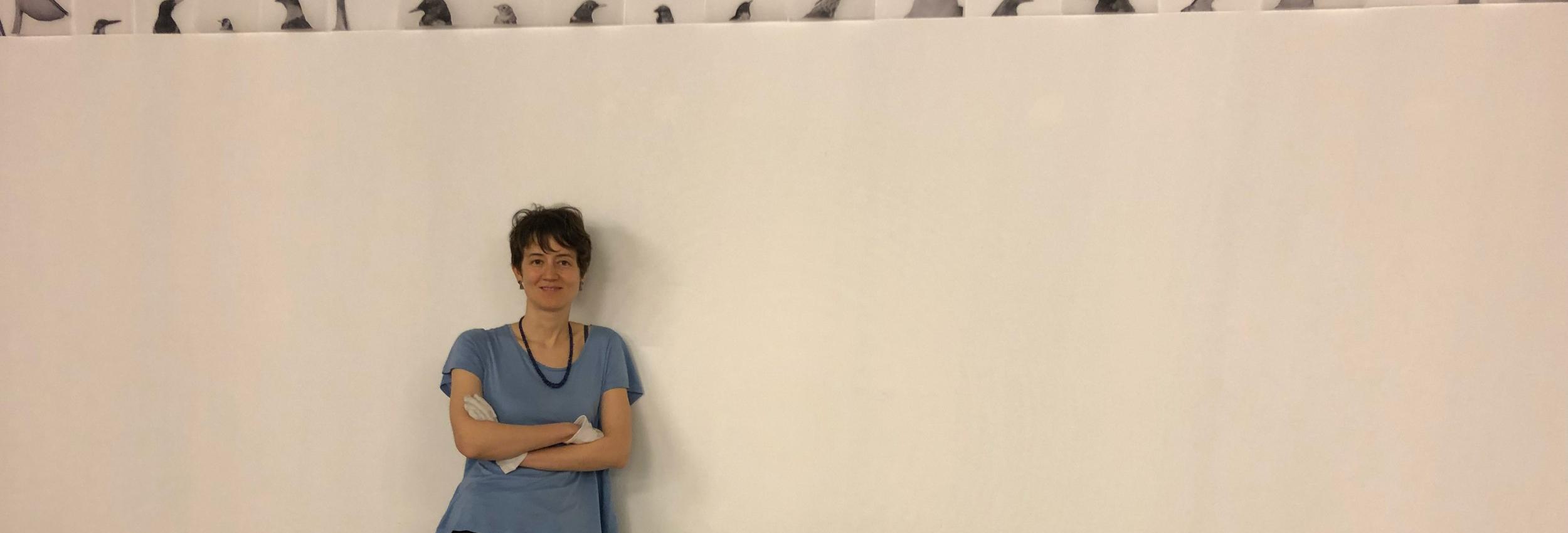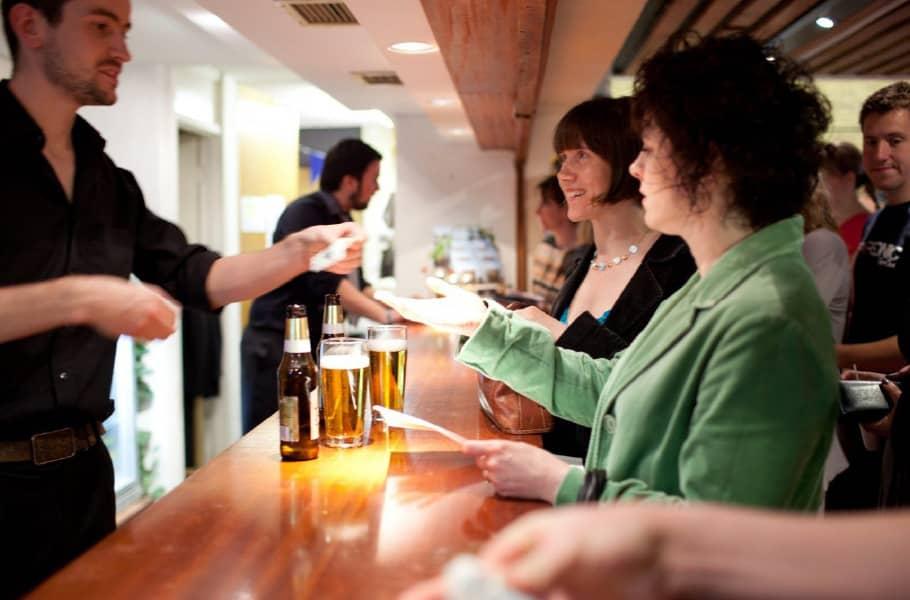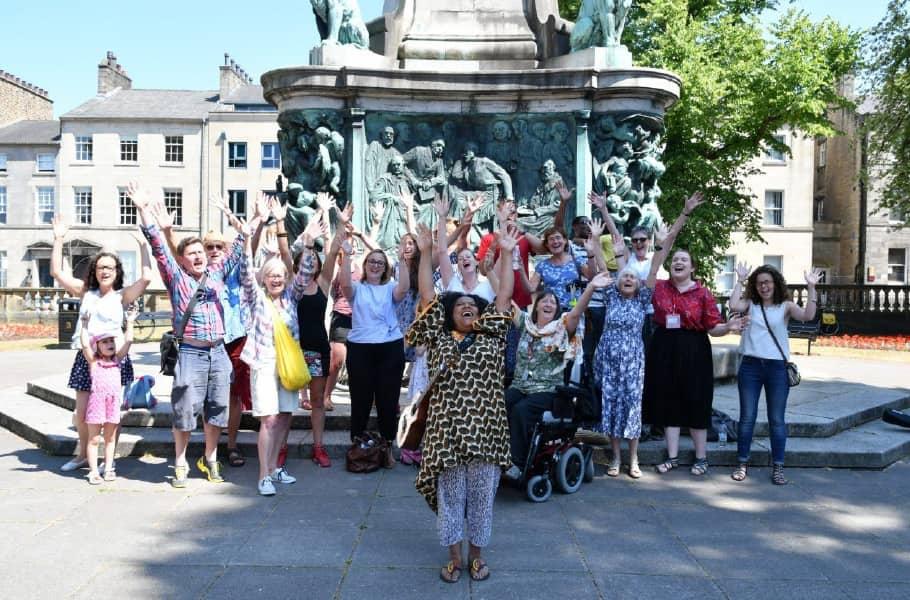Sena Başöz’s ‘Forough’ – a deeper exploration
From 9 February to 28 March 2024, visitors to the Peter Scott Gallery can experience ‘Forough’, an immersive installation from Istanbul-based artist Sena Başöz. Presented to the Gallery in 2022 by the Contemporary Art Society, this work is an example of how we hope to enrich the collection, offering the opportunity to share thought-provoking contemporary art practice. In this blog, Curator Miranda Stearn introduces the work and talks to the artist about how it came about and the meanings we might find within it.
Posted on 8th Mar, 2024
Walk into the Peter Scott Gallery and you will find yourself surrounded by hundreds of images of birds. If you close your eyes, you can listen to the rustle of their wings as fans animate the birds in sequence. They hang suspended, and yet in motion. These birds have travelled far in time and space to join us here in Lancaster. From living, breathing creatures populating the skies of the Ottoman Empire, to taxidermy specimens sacrificed in the pursuit of knowledge and the urge to categorise, to a semi-hidden archive awaiting rediscovery and documentation. And now, photographed and reanimated, they carry new meanings into our 21st-century consciences.
Forough is a flying archive, representing individual lives that have been restricted, deprived of freedom or lost. We might think about the individual birds, or about the loss of nature more generally - some of these birds now only exist within the archive. But these birds stand in for human lives too, victims of enforced disappearances, in the artist’s native Turkey and beyond.
Their individual portraits echo images of the disappeared, held up at protests. The title of the work refers to the first name of Iranian poet, Forough Farrokhzad (1934-67). It evokes her enigmatic line: “Keep the flight in mind, the bird may die”. Both the artwork and poem are open to multiple meanings. Do they speak of the transience of life? Or our potential to hold in mind something essential – the bird’s flight – that persists beyond a lifespan? As an artist interested in healing, and in reanimating that which is lost, perhaps Sena is conjuring this sentiment, imbued with both hope and resistance.
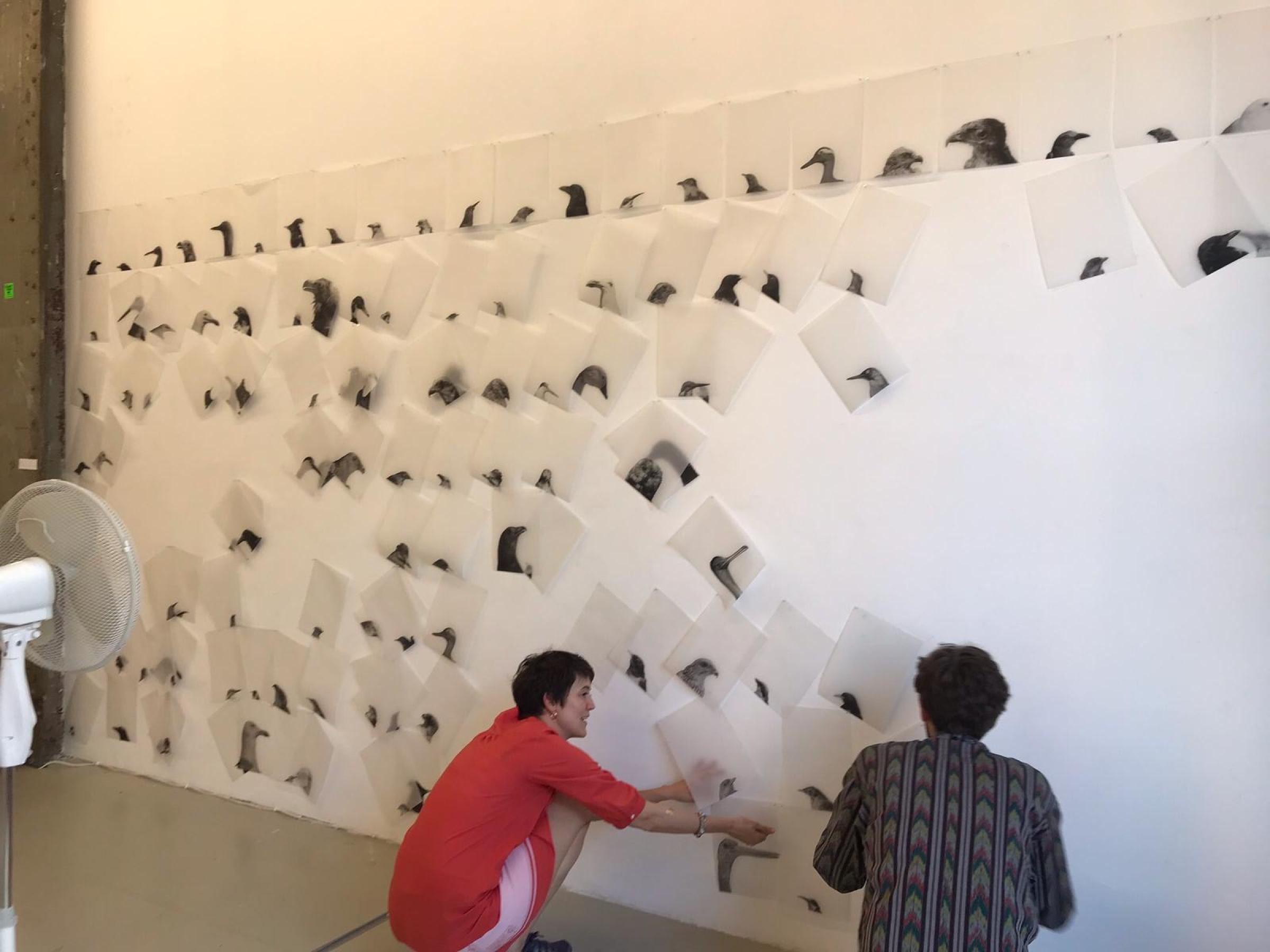
We asked Sena to help us understand a bit more about the artwork, its context and different layers of meaning we might find within it.
Q: Can you tell us a bit more about the political and historical context for the work and how it uses the images of the birds to address the history of people who were ‘disappeared’?
A: When you google "Saturday mothers" you will find many examples of what has inspired me to make this work. These people gathered since 1995 to keep the case of their disappeared relatives open. They always carry the missing relatives' photos. As I was exhibiting in the same building with Hafıza Merkezi (Memory Center) founded to keep track of these disappearances, my initial impulse was to make a monument for these people. I was hopelessly searching for a way to photograph birds' portraits in a similar way. So birds were a metaphor in the beginning.
I was invited to show my work as an artist in an exhibition at St.Joseph French High School in Istanbul. There I came across their expansive collection of taxidermied animals. The Catholic ‘freres’ who ran the school started building this collection towards the end of 19th century in what was then the Ottoman Empire capital Istanbul. They continued building this collection with Anatolian animals until the 1960’s. What could be a better way to take portrait photos of birds than photographing dead and taxidermied birds? Coming across this collection expanded the concept of the work.
Q: Looking at all these images of taxidermied birds from a century ago, some of which may no longer exist, might encourage us to view the work from an ecological perspective and make us think about species loss. How does this relate to your thinking about the work?
A: To be precise I know for sure that one bird species among the collection is extinct. But the rest is not easy to find too, especially in those places they were found before. For example, in the collection there is a pelican almost my height and it was killed in Kadıköy to be taxidermied, a very urban area, very close to the school. Imagining that huge bird in Kadıköy right now is impossible, almost surreal. So technically this kind of bird is probably not extinct and could be found somewhere else but has disappeared from the urban landscape.
I am interested in drawing attention to the disappearance of nature too as the work refers to lost lives. Even though it's not my initial starting point, I like that it can be read from that disappearance perspective.
Q: How easy was the bird collection to access?
A: It is a semi-hidden archive. You have to organize a school tour to see it or be a student at the school.
Q: Can you tell us a bit more about the title of the work and the poet it is named for?
A: My reading of the poet’s words is a bit political. The bird's life can be taken away, but what is lived cannot be taken away. The flight might stand for a person's ideals and how they stood in this world, how they impacted others, their art, their children... How they lived made a difference in the world. Nothing abruptly ends. There is a continuity in different forms. The bird is transient, however the bird's legacy, impact carries on. So true for Forough herself. She died so young but her words still give me courage and inspiration as a Turkish woman. They give solace to hearts dealing with the transience of life. Her flight was full of inspiration, so productive. A bird's life is so easy to take, that is why I like this line. If they said it for a lion, like "the lion may die but remember its walk" it would still be powerful but the bird seems so weak and small yet had a flight and it has an impact that cannot be taken away.
The full poem text reads:
The Bird May Die
I feel sad,
I feel blue.
I go outside and rub my cold fingers-
on the sleek shell of the silent night.
I see that all lights of contact are dark,
All lanes to relate us - are blocked.
Nobody will introduce me to the sun,
Nobody will take me- to the gathering of doves.
Keep the flight in mind,
The bird may die.
Forough Farrokhzad (1934-67)
Translation: Maryam Dilmaghani
Sena Başöz (b. 1980) is based in Istanbul, Turkey and works across different media. She seeks ways of interacting with what is considered out of reach, often working with archives which she sees as sitting between life and death.
The taxidermy birds are from the natural history collection of the Lycée St. Joseph, a French Catholic school founded in Istanbul in 1870.
More information about Forough Farrokhzad can be found by following these links:
Sena’s artwork Forough (2018) was presented to the Peter Scott Gallery by the Contemporary Art Society in 2022, and has become part of the Peter Scott gallery charitable Trust collection.
